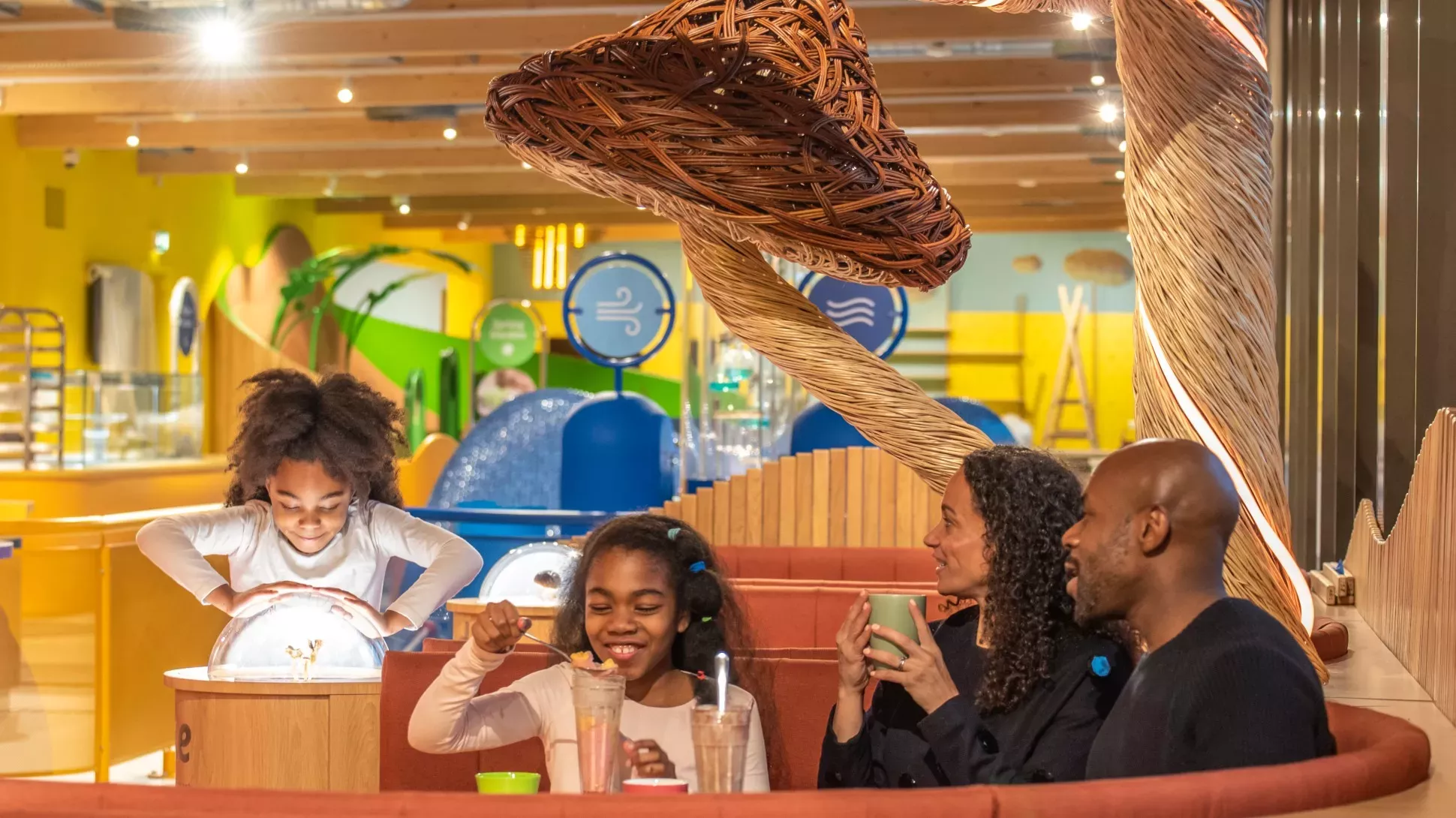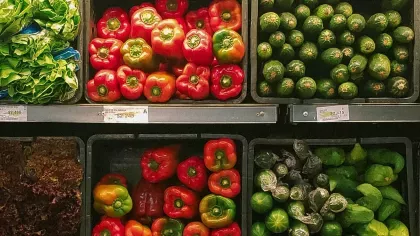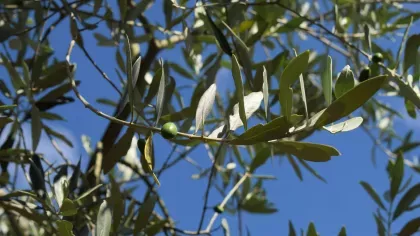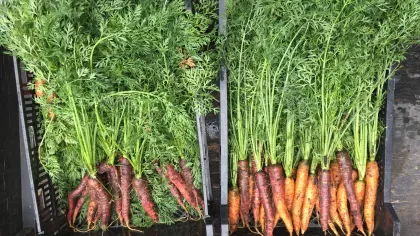6 April 2022
Five fantastic facts about food
Take a bite out of these amazing facts for food lovers, inspired by our new Family Kitchen and Shop at Kew Gardens.

The new Family Kitchen and Shop at Kew Gardens is a great place for families to refuel on a day out and learn about where food comes from.
Before you visit, build up your appetite by snacking on five fantastic facts about the important role of plants and fungi in our everyday lives.
1. Enset: The false banana
Stepping into the Family Kitchen and Shop, you won’t miss the giant pink and green enset tree.
Enset is a plant very similar to a banana that is grown in Ethiopia, and other parts of Africa.
It grows banana-like fruits, but you probably wouldn’t want to eat one, as they’re full of huge black seeds!
But enset still provides food for millions of people — the stem and roots are mashed up and buried underground for up to two years to make a bread-like food called kocho.
A side product of making kocho is bulla, a white powder that can be used to make dumplings and pancakes.
The root of the enset tree, called amicho, is also edible. It can be boiled and eaten like a potato.
Isn’t it amazing how many foods that you can get from one plant?
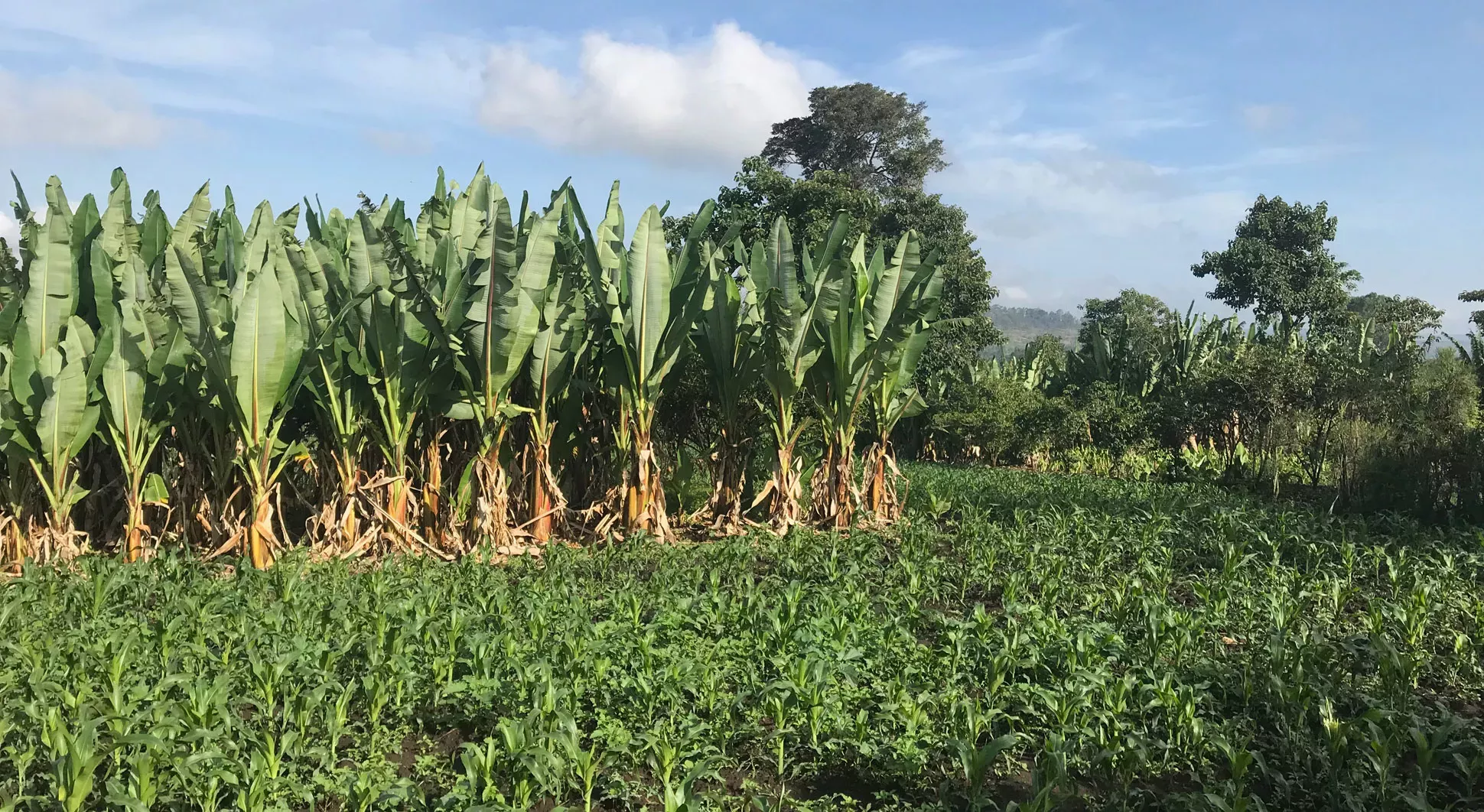

2. The many faces of wild cabbage
Another plant that gives us a range of different foods is wild cabbage (Brassica oleracea), although it has taken over a thousand years to develop them!
Wild cabbage has been cultivated by breeding individual plants together to create new plants with different features.
For instance, when wild cabbage was bred to have larger leaves, it eventually led to the creation of kale. When these leaves were bred to be more tightly bunched together, this led to the creation of cabbage.
Brussel sprouts, cauliflower and kohlrabi are also cultivated varieties of wild cabbage.
You might even be able to spot one of the most well known cultivars of wild cabbage, broccoli, when you're exploring the interactive areas in the Family Kitchen and Shop.
Who knows what new types of food we might get from breeding wild cabbage in the future?


3. The fungus among us
While plants make up a big chunk of our meals, it is important to celebrate another key player: fungi.
Fungi grow in lots of places, like underground or in dead plants. When they need to spread spores, they produce mushrooms, some of which are edible.
We eat mushrooms in all sorts of dishes, like in stews, or on one of the pizzas served up in the Family Kitchen and Shop.
In fact, the world produces over 10 million tonnes of mushrooms a year, which is worth over $40 billion!
Yeast is another type of fungus which causes fermentation and is used to make bread, cheese, and even Marmite!
Despite fungi being such an important food, there’s still a huge amount of we don’t know about them. Even though we’ve identified over 140,000 different species, scientists believe there could be over 3.5 million fungi that science has yet to name.
In 2017, scientists working at Kew discovered three species of fungi new to science in a packet of dried Chinese porcini bought from a shop in London.


4. Global grub
We have a lot of foods in the UK that we think of as being 'traditionally' British, but in fact many have travelled from foreign shores.
The potato, which we use for crisps, chips and mash, might feel like a classic British vegetable, but it only arrived here at the end of the 16th Century. Its original home was South America, in countries including Peru and Bolivia.
While the wild carrot is a native UK plant, the domesticated carrot we eat today was first cultivated in Afghanistan almost 1000 years ago, but at the time they were purple instead of orange.
And there’s nothing more British than a cup of tea. But tea was first served in the UK in the 17th Century, when it was introduced via the East India Trading company. Tea plants originally grew in China and Burma.


5. Tasty tricks
Some plants, like garlic and chili peppers, have strong flavours that spice up our favourite dishes.
But did you know they are actually supposed to ward off hungry wildlife?
The chemical that makes chili peppers spicy, capsaicin, is an evolutionary trick to stop mammals like rodents and monkeys from crushing the seeds of the plant when they eat it.
Similarly, the strong taste of garlic is supposed to deter any hungry animals from munching on the bulb. The flavour and smell are only released when the cells of garlic are damaged, for instance when an animal takes a bite.
Despite this, humans have grown to love these flavours!


You can discover all of these foods and so many more when you visit the Family Kitchen and Shop at Kew this Easter.
